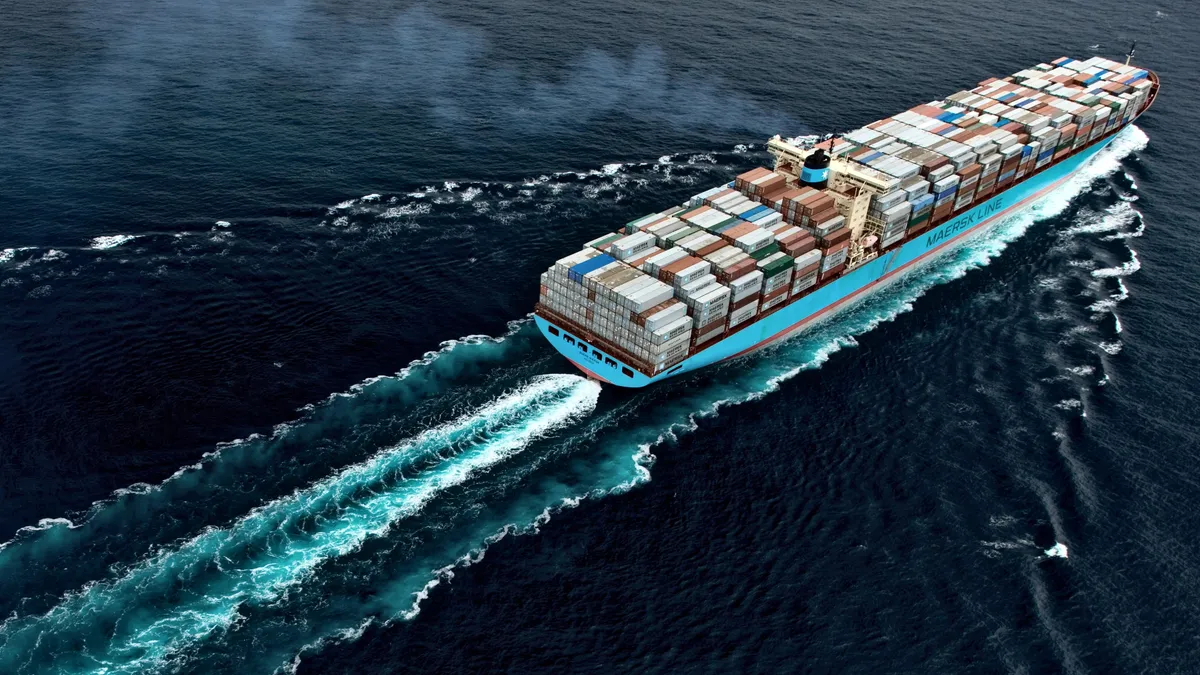Dive Brief:
- Maersk increased its loaded freight rate by 4.5% year over year (YoY) in the second quarter, as the ocean carrier experienced a 16% decline in volume compared to the same period last year, the company said in its Q2 report.
- Maersk's average fleet capacity declined almost 2% YoY as it attempted to match freight supply to the plummeting global demand during the coronavirus pandemic. It is this capacity management that allowed the carrier to raise its rates even while volume declined.
- "In total, more than 160 sailings were blanked in Q2, leading to a decline in offered capacity in line with demand reduction," the carrier wrote in its report.
Dive Insight:
The pandemic ravaged the global economy in the first half of 2020, and the shipping industry was not exempt from the economic assault. But in a demonstration of confidence, Maersk reinstated its guidance for the year after suspending it in March.
The guidance comes with a caveat that seems to be appended to many forecasts these days: The market is still more unpredictable than it was pre-pandemic.
"The global demand growth for containers is still expected to contract in 2020 due to COVID-19 and for Q3 2020 volumes are expected to progressively recover with a current expectation of a mid-single digit contraction," Maersk said in a press release. "Organic volume growth in Ocean is expected to be in line with or slightly lower than the average market growth."
Maersk's reinstated guidance is better than what the carrier was expecting before the pandemic, expecting EBITDA of between $6 billion and $7 billion, compared to $5.5 billion before the pandemic.
"This is even more bullish than Hapag-Lloyd who 'only' maintain their profit expectations at the same level as they were before the pandemic," Lars Jensen, the head of consulting at Sea-Intelligence, said on LinkedIn.
Maersk's earnings come after Hapag-Lloyd reported similar trends in rates and volume in its earnings last week. Hapag-Lloyd's freight rates rose 3.1% YoY with volume down 11% YoY.
Shippers are increasingly taking advantage of the digital tools Maersk offers, with SPOT accounting for 41% of total loaded short-term volume, measured on a four-week average.
"The instant pricing with load guarantee and its digital engagement model provided even greater ease, efficiency and peace of mind for customers amid volatile market conditions and service changes," Maersk said of SPOT use.














